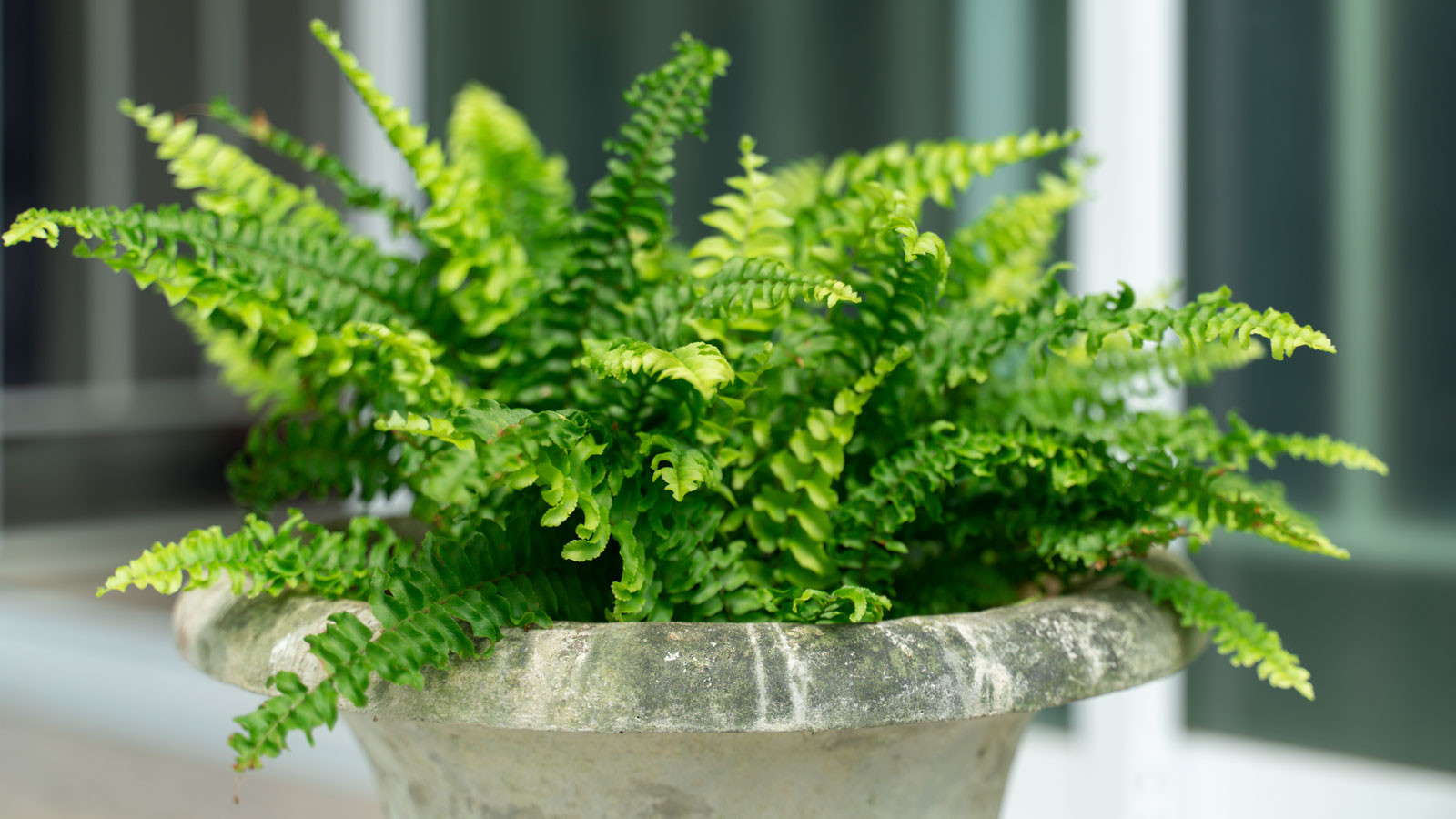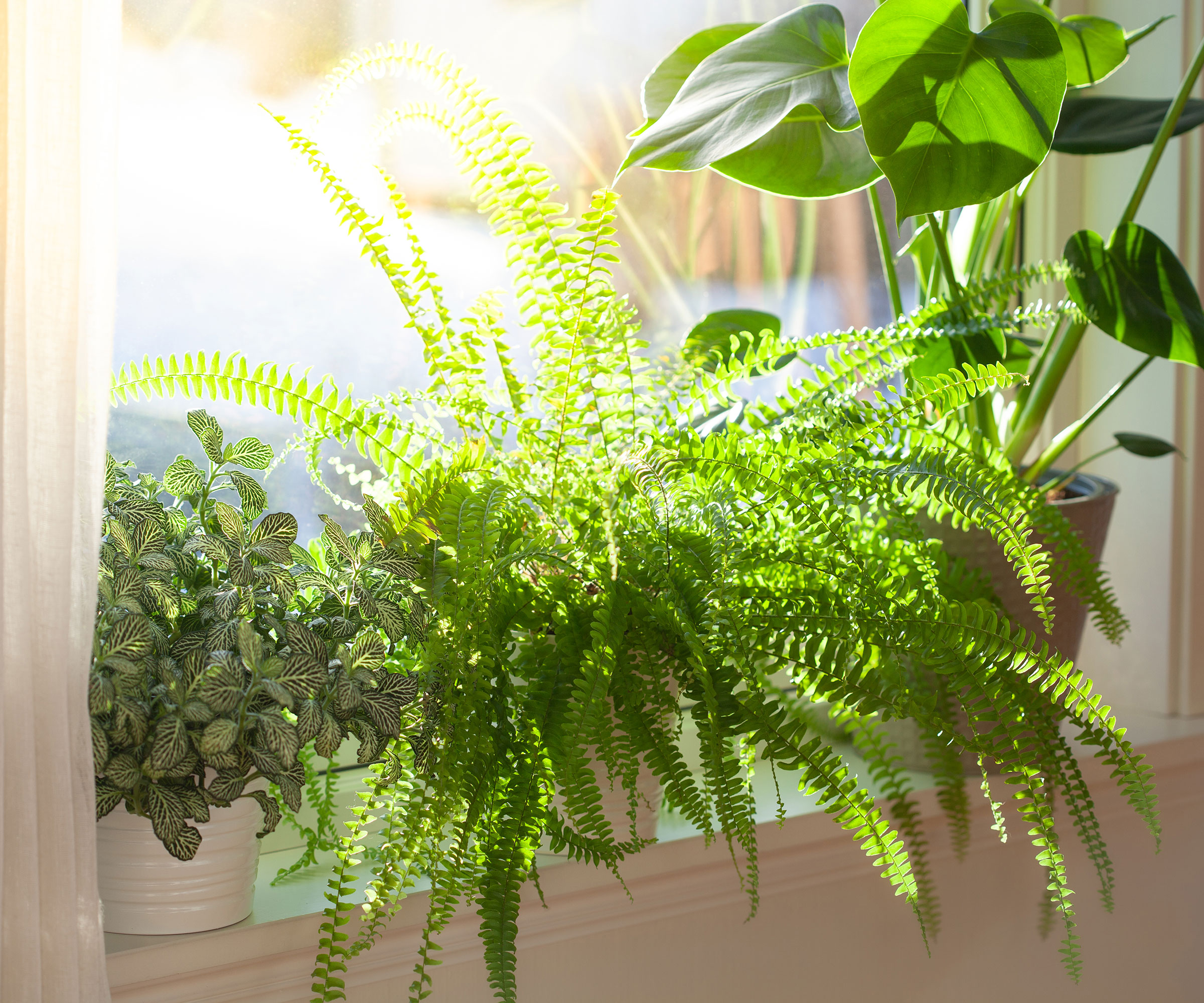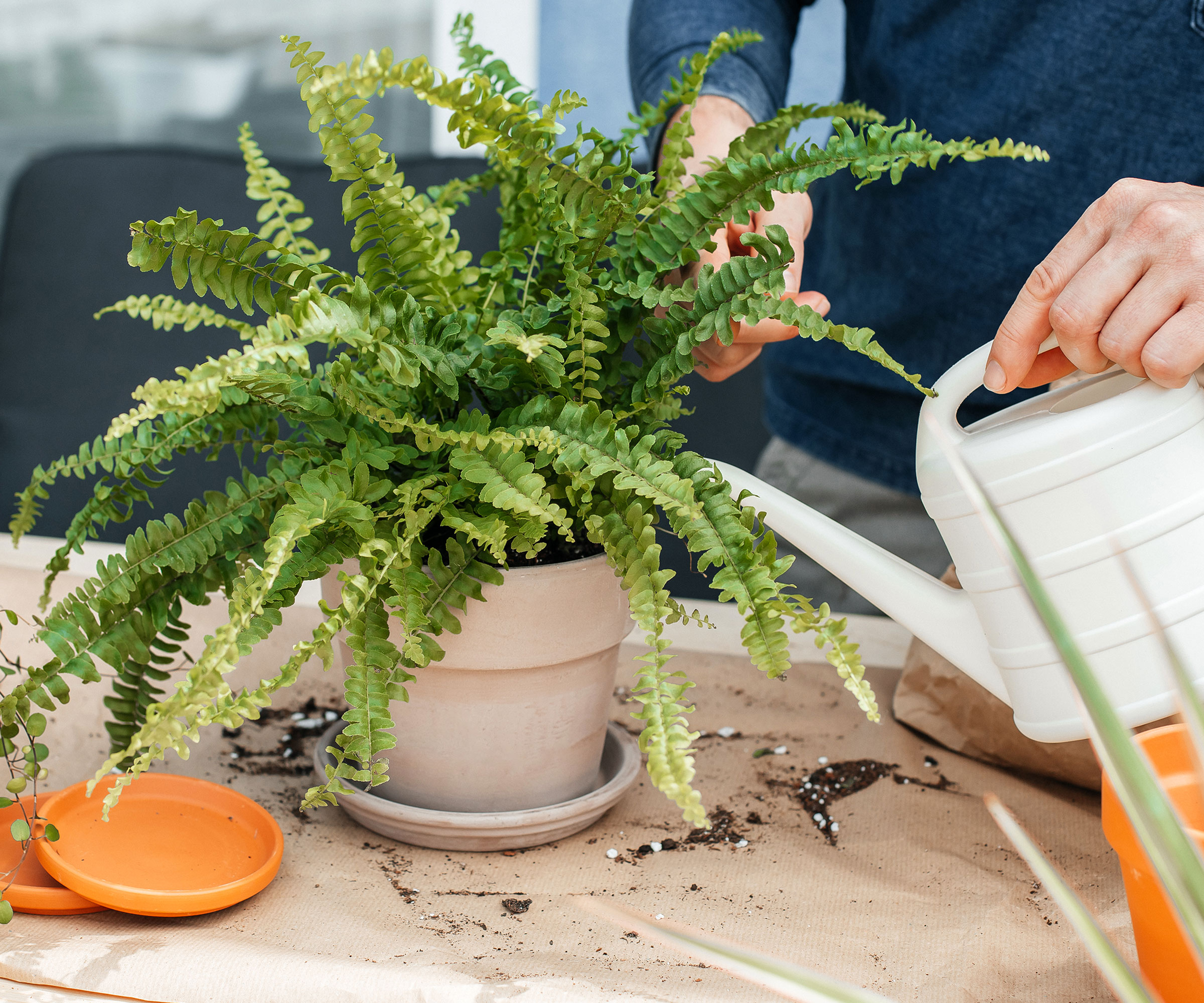How To Overwinter Boston Fern Plants: Keep Sword Ferns Well Cared For In Winter Months
Boston ferns are some of our most enduring plants – but make sure you’re giving them the best care in cold months. Here’s how to overwinter Boston fern plants


If you have a lush, green Boston fern on your patio, you won’t want to let it die as colder temperatures approach. Being able to overwinter Boston fern plants is a highly satisfying endeavour, as you will be rewarded with highly structural foliage and verdant displays with the potential for year-round leafy pleasures. Knowing how to overwinter Boston ferns properly is easier than you think, and well worth your time.
Whether you enjoy Boston ferns outdoors in summer or as year-round houseplants, you will need to allow for some special Boston fern care during the colder months. They need adequate light, warmth and humidity. Alternatively, you can overwinter a Boston fern in a garage or similar space, and let it go dormant.
Can You Overwinter Boston Ferns?
You can easily overwinter Boston ferns as long as you provide it with the right conditions. They are only hardy outdoors in USDA zones 8-11 and grow in climates that are warm and humid. They will not survive outdoors in colder, drier climates in winter. As tropical ferns, they are a little fussy in winter. However, it’s not difficult to give them the conditions they need as long as you know what they are.

How to Overwinter a Boston Fern
While Boston ferns don’t need swelteringly hot temperatures, they will not tolerate too much cold and certainly not a frost or freeze. If you are growing a Boston fern outdoors, you need to bring your ferns inside before the first frost is due. Acclimate the plant to its new environment gradually; don't move it abruptly into a new location. These key care essentials can make all the difference as you head towards winter:
- Before bringing it indoors, hose the fern down to remove any insects you don’t want in your home and give it a good soaking. You also need to cut back the fern. Trim ferns back gently, removing any dead, brown or dying fronds and any that are long or straggly. We recommend using these Fiskars Micro-Tip Pruning Snips from Amazon for precision.
- Place it by a window that gets a couple of hours of bright, indirect light each day. A south-facing window is ideal. The area should also be free from cold drafts. Ideal temperatures for a Boston fern in winter are 75°F (24°C) during the day, and a little cooler at night. Temperatures should not go below 55°F (13°C).
- Your fern will also need humidity, but winter air indoors is often dry. Use a pebble tray, like this option from Amazon, or place the fern near a humidifier. Water it regularly to keep the soil moist but never soggy, and provide liquid fertilizer, like this Fern Fertilizer from Amazon, every four to six weeks. Withhold fertilization when overwintering Boston ferns.
Letting a Boston Fern Become Dormant
Overwintering Boston ferns in a hot, dry home environment can cause mess and frustration. If you don't have the right conditions indoors, you can let the plants go dormant and store them in a garage, basement or outdoor building where temperatures don't go below 55°F (13°C).
If you want to overwinter Boston ferns in a dormant state, you need to keep them in a cool (not cold) location with minimal light and plenty of humidity. A dark place is fine for the plant in a sleeping stage. During plant dormancy, reduce watering and do not fertilize them.

Problems Overwintering a Boston Fern
You may find your Boston fern survives over winter inside but doesn’t thrive. This is normal. Keep it going until you can get it outside again. Humidity is one of the biggest issues. Your fern must have adequate moisture in the air, or you will begin to see fern leaf drop.
Another issue is bringing a fern in too late in fall or winter. A frost can damage a Boston fern and a freeze will kill it. If your fern has frost damage, you may still be able to save it. Trim back the damaged fronds and water the fern regularly but lightly. You should see new growth in a few weeks.
Sign up for the Gardening Know How newsletter today and receive a free copy of our e-book "How to Grow Delicious Tomatoes".
How to Revive a Boston Fern After Winter
As long as your fern didn’t completely die overwinter, you should be able to revive it in the spring. Provide it with a bit of fertilizer and plenty of water. Once the last frost date has passed, take your fern outside for a few hours a day to acclimatize it. Do this gradually so as not to shock the plant. Place it in the shade initially and gradually introduce sunlight.
After you move your houseplant outside, trim off any dead, dry or yellow fronds and watch for signs of new growth. Begin fertilizing the fern as usual and provide plenty of water. It’s best to water the ferns with rainwater, or water that is not chlorinated. Overwintered plants resume growth in early spring and should be lush and full again in the second year.
Frequently Asked Questions
Can Boston Ferns Stay Outdoors?
Those in subtropical zones without frost and freezing temperatures can learn how to overwinter a Boston fern outdoors. In USDA Hardiness Zones 8b-11, it's possible to provide outdoor winter care for Boston fern.
What Temperature is Too Cold for Boston Ferns?
Ferns will survive occasional days or nights with temperatures as cold as 40°F (4.4°C). The ideal temperature range is 60-79°F (16-26°C). Boston ferns are not hardy in cold climates. While they can survive frost with good care, they will not survive a freeze.
How do you Nurse a Boston Fern Back to Life?
To revive a damaged Boston fern, first cut back the dead or nearly dead fronds all the way back to the soil. Give it a good soak and water it regularly. Place the fern in a spot with indirect or weak light and provide diluted fertilizer, such as this Fern Fertilizer from Amazon. If it is going to survive, you should see new growth in about a month.

Mary Ellen Ellis has been gardening for over 20 years. With degrees in Chemistry and Biology, Mary Ellen's specialties are flowers, native plants, and herbs.
- Becca BadgettWriter
- Amy DraissDigital Community Manager